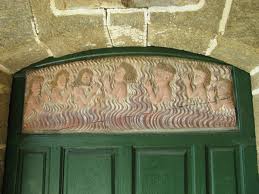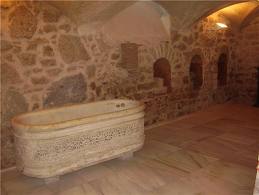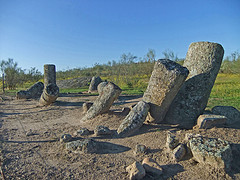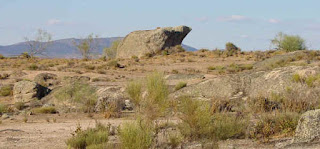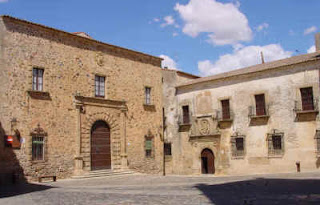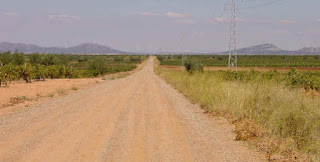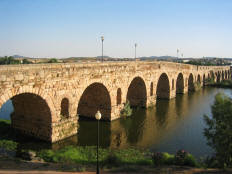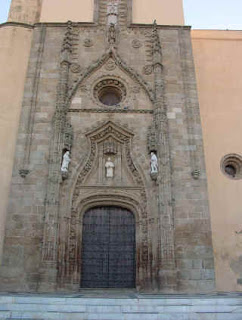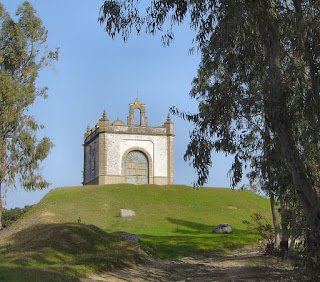The foggy route out of Ourense took me over a Romanesque bridge into a lengthy suburb before joining the Camino Real where I was accosted by an old man who pumped my hand several times while talking volubly. Unfortunately he spoke thick Galician and appeared to have no roof to his mouth, so I was only able to understand one word in ten, but that didn’t seem to bother him as long as I nodded at intervals and shook his hand back.
After quite a long climb I suddenly emerged from the cloud into a glorious bright autumn day, with the path going through beautiful woods and enough villages to stop occasionally for coffee or a drink. It was sad that the way-marking bollards had almost all been vandalised – I first spotted one shortly after A Gudina and noticed as well as a scallop, it showed the distance to Santiago in metres, so the first ones I saw were in the 230,000s or thereabouts. It would have been encouraging to see them now they must be well under 100,000, but the distance had invariably been chiselled off, and the scallop frequently smashed as well. It’s far from the first vandalism I’ve seen en route – several of the large stone information panels in Extremadura had had their information pulled off. On one somebody had written “dinero inutil” which may have been a valid point, not least as the un-vandalised ones were often bleached unreadable by the sun. And on a couple of “Albergues de pelegrinos” signs the “pelegrinos” has been crossed out and replaced by “putanos”. May just be mindless vandalism, or possibly anti-religious, or just possibly a comment on the relatively small benefit we bring: on a night when I sleep at an albergue at €5-10, have a menu del dia at €8-10, a couple of cups of coffee here and there and a bocadillo and a caña for lunch, it’s quite easy not to spend more than €20 in a whole day, which is hardly a great contribution to the local economy (obviously on the Camino Frances, with 100s a day passing through spending that or more, it will make a difference, but on this route I’m often the only, or virtually the only, pilgrim in 10 miles in any direction). But I’ve never encountered any hostility – bemusement, yes, amusement, sometimes, total indifference, lots of times, but never hostility. Usually it’s friendly curiosity – somebody in a bar wanting to know how far I’ve walked, where I come from and so on, or a farmer waving from a tractor, or just somebody shouting “buen camino” from across the road.
Got to Cea in time for a late lunch – it’s famous for its bread, with some 20 bakeries. Then stopped in the albergue, where I was joined by Sassie, the Italian pelegrina who I last saw in Mombuey, over a week ago (she'd travelled from Puebla by the northern route). She made my walk from Seville seem very modest – two years ago she’d walked from Sienna to Santiago, via Nice, Montpellier, Toulouse and the Camino Frances, 2700km in all. That really would stretch the legs, and mine feel quite stretched already.
On Saturday morning I left just before dawn and carried on over the occasional pass mostly through lovely undulating wooded countryside. The half moon was high in the sky at starting, and still visible at 1pm when a few clouds starting to obscure it. Briefly saw the back end of a large bushy tailed dun-coloured cat-like animal. Assume it can’t have been a lynx in these parts, but it was miles from any houses and too big to be a domestic cat anyway, and certainly not the right shape and movement for a fox (or colour – although I did see a very pale-coloured fox in Sardinia last summer).
Had been planning to sleep in Lalin, but it appeared to be a bit of a dump, and a barman told me the albergue at A Laxe was very good and only 5 km further on, so I went there instead. Once again I had the place to myself, but hearing the rain crashing down on the roof a couple of feet above my bunk bed wasn’t pleasant (one always wonders if it means the whole of tomorrow will be like that). Also they turned the heating off at 10, so it was quickly really uncomfortably cold.



